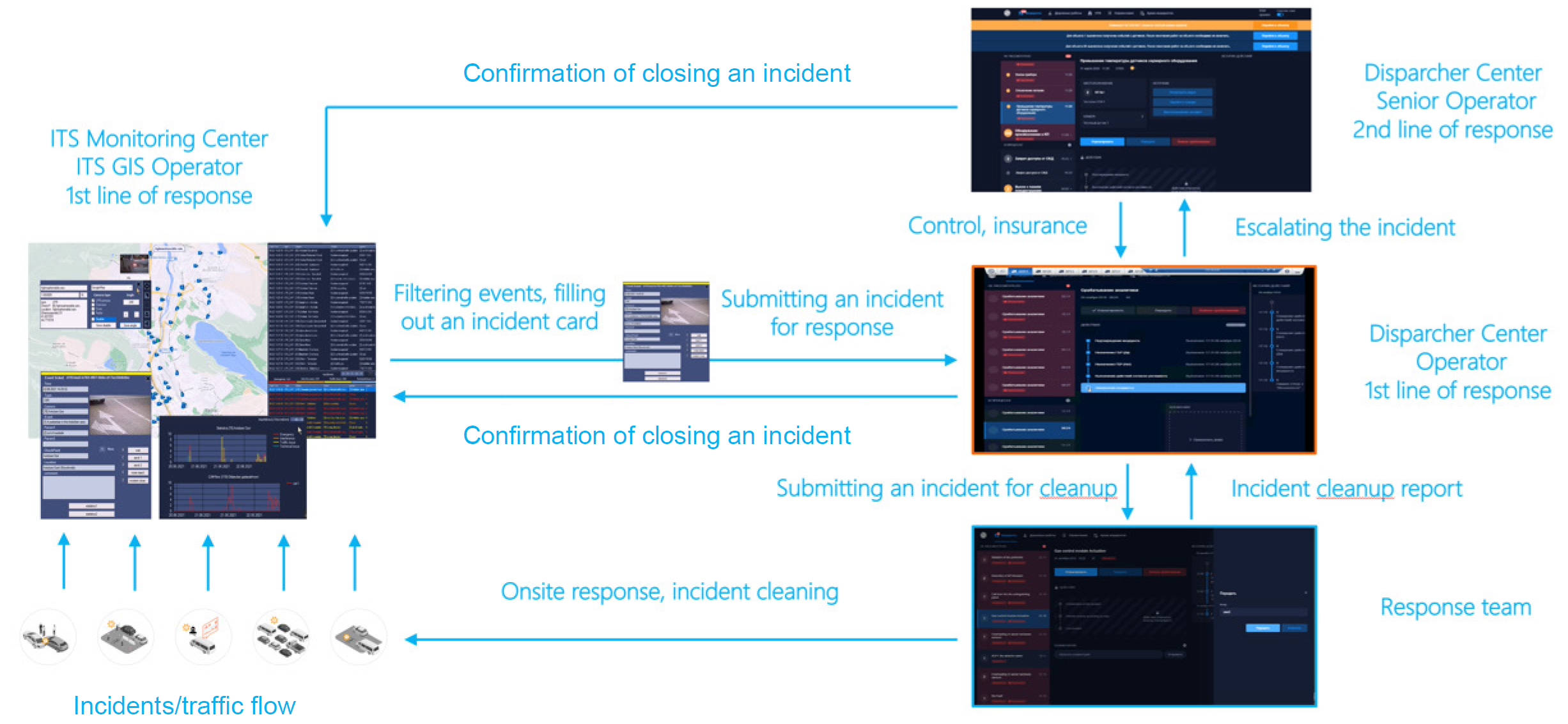SecurOS ITS—Incident processing and response management
Home > Edge > Digital Cities Edge > White Papers > Dell Technologies Video Analytics Reference Architecture with ISS - White Paper > SecurOS ITS—Incident processing and response management
SecurOS ITS—Incident processing and response management
-
The incident detection, processing, and response management system is one of the most important parts in integrated SecurOS ITS solutions.

Figure 13. ITS Traffic incident detection and management
The architecture of such systems is inherently complex and integrated. The system uses an extensive network of IP cameras to monitor the road infrastructure and traffic flows. Traffic flows and traffic situation are analyzed using special NN trackers. Metadata from NN trackers goes into a special engine that processes them, classifies, and filters events according to the required criteria. ISS offers unique processing of these VA events, which is defined by natural language programming, see Application of video analytics in ITS.
At the top level, this system displays digital maps, dashboards, and special interfaces that allow operators and response teams to receive, filter and process incidents until they are resolved and closed.
SecurOS ITS system software architecture

Figure 14. ITS system architecture
Scenarios for ITS VA processing
The geographic information system (GIS) subsystem works as a top-level system. All events from VA are displayed on a digital map and are displayed in a unified user interface. The operator's task is to check incidents, classify them, filter out false events, fill out a special incident form, and send it to the response system.
In the response system, all events are analyzed to ensure that the required responses are sent to the appropriate response teams. All business response processes are automated as much as possible. Typical incidents have a standard processing algorithm available to the response operator as prompts. After the initial processing by the response operator, the corresponding incident is sent to the appropriate team(s) for on-site response.
The onsite response team continues to work with the response system using mobile devices (smartphones, tablets, laptops, etc.). Once the incident has been cleared on site, a report is recorded in the system and the incident is sent to the responsible operator for review and final closure.
After confirming the incident, the information is sent to the GIS system, where it is removed from the active list and enters the event archive. Thus, the incident goes through a full cycle of processing from the moment it occurs, until it is processed and completely closed.
SecurOS ITS VA event processing

Figure 15. ITS event processing and management
